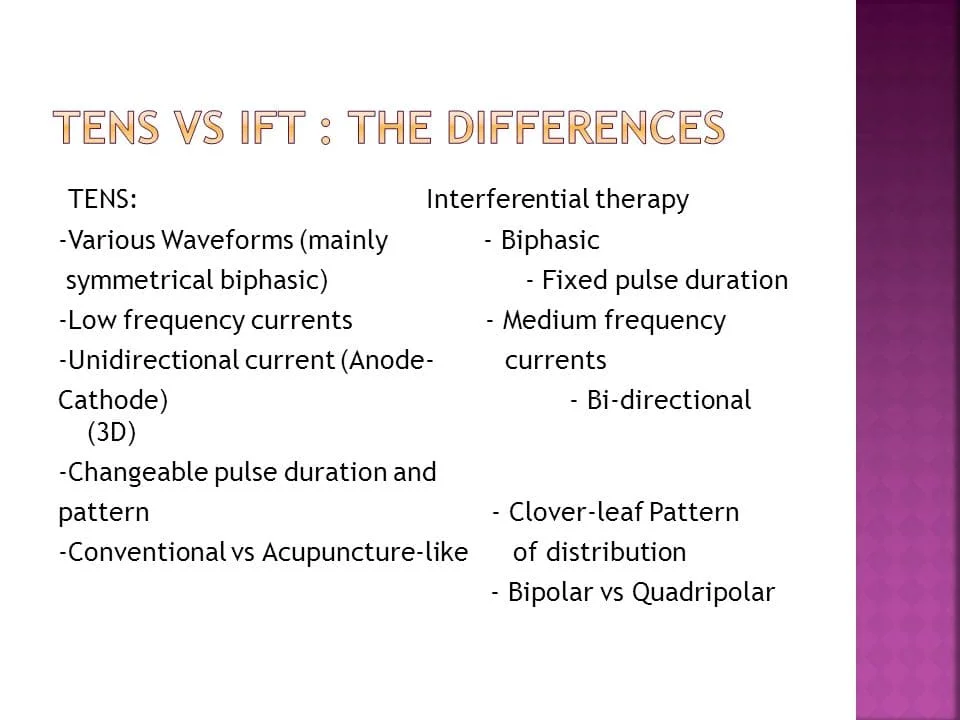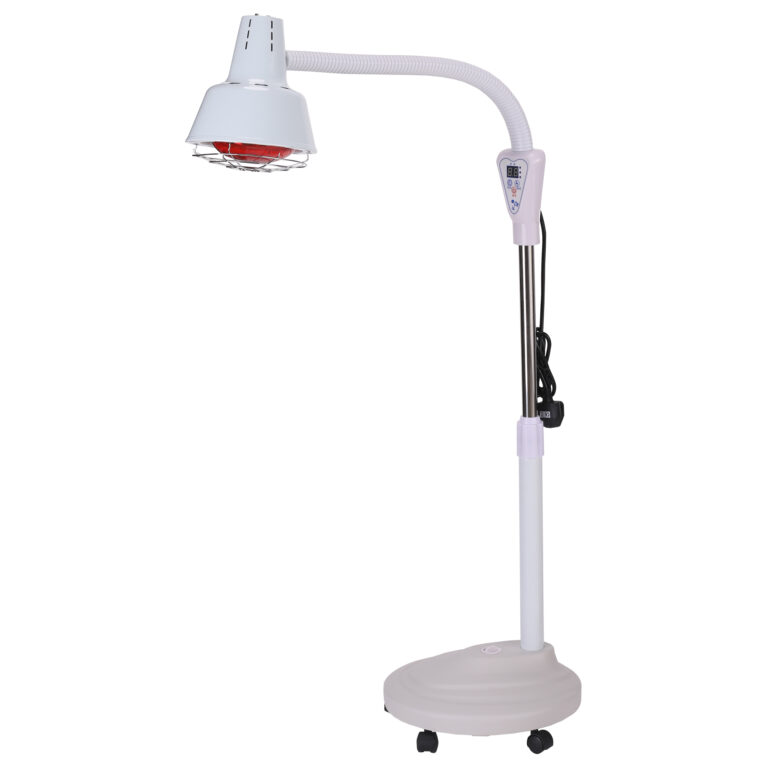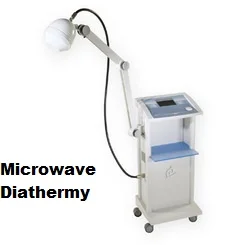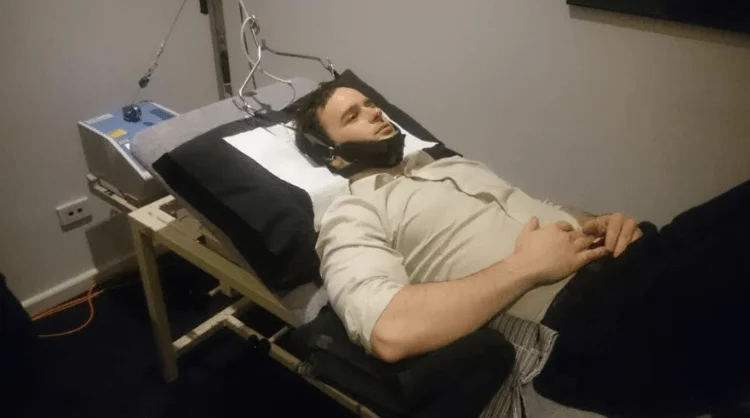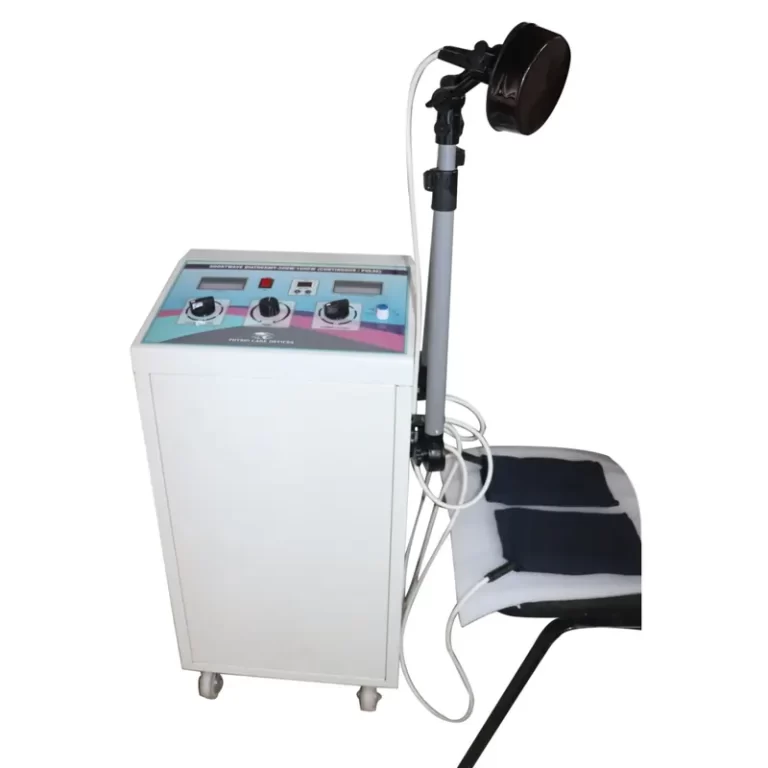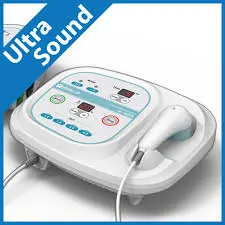IFC VS TENS: Which are the Best for Pain Relief?
IFC VS TENS – Both are electric current-based pain management techniques used to treat chronic pain, post-operative and post-traumatic acute pain, and long-term, uncontrollable pain.
It has been demonstrated that the two methods are safe and efficient substitutes for pharmaceutical painkillers. In addition, they are generally non-addictive and have little adverse effects on patients. Due to skin irritations where the electrodes are positioned, they may have certain unfavorable side effects. Nonetheless, they are both lightweight and easy to use.
What is an Interferential Current Therapy (IFC)?
The fundamental idea behind Interferential Current Therapy (IFC) is to take advantage of the physiological effects of low frequency (<250pps) electrical nerve stimulation while avoiding the uncomfortable and occasionally disagreeable side effects that come with such stimulation.
Many “portable” interferential devices have recently become widely accessible. They are completely capable of providing “proper” interferential therapy despite their small size, although some are limited in their functionality and the practitioner’s capacity to “set” all parameters.
What is a TENS?
Full form of TENS – Transcutaneous Electrical Nerve Stimulation.
The main goal of TENS, an electrical stimulation technique, is to partially relieve symptomatic pain by stimulating sensory nerves, which in turn activates the opioid system and/or the pain gate mechanism. These many physiological pathways are related to the various TENS application techniques.
The type of clinical pain being treated determines how effective TENS is, although research indicates that when administered “well,” it can dramatically reduce pain compared to a placebo intervention. TENS has a substantial body of research supporting it in both clinical and laboratory settings; important studies are cited, even if this brief does not offer a comprehensive analysis of the literature.
It’s important to remember that the word TENS can refer to ANY electrical stimulation intended to stimulate nerves using electrodes applied to the skin’s surface. It is most frequently understood to refer to the application of electrical stimulation in a clinical setting with the express goal of relieving symptomatic pain. When searching the literature for TENS, it’s normal to find many “other” forms of stimulation that are technically included in this category.
Difference Between IFC VS TENS
The terms Transcutaneous Electrical Nerve Stimulation (TENS) and Inferential Current Therapy (IFC) are acronyms. Electric currents are used in both treatment options for acute pain following surgery or trauma, as well as long-term, uncontrollable pain.
Here’s a comparative table highlighting the main differences between TENS and IFC:
| Feature | TENS | IFC |
| Full Form | Transcutaneous Electrical Nerve Stimulation | Inferential Current Therapy |
| Basic Principle | Delivers low-voltage electrical currents to nerve endings to alleviate pain | Utilizes low-frequency electrical currents that cross paths to produce a therapeutic effect |
| Mechanism of Action | Blocks of pain signals sent to the brain stimulates endorphin production | Promotes pain relief through deeper tissue penetration and muscle stimulation |
| Electrode Placement | Placed directly over the painful area or along nerve pathways | Typically requires the placement of four electrodes forming a square around the area of pain |
| Frequency | Typically uses frequencies between 1-250 Hz | Typically uses higher frequencies (about 4000 Hz) that are modulated at a low frequency (1-250 Hz) |
| Pain Relief | Provides immediate pain relief during use | May provide more profound and longer-lasting pain relief, even after the treatment session |
| Indications | Effective for acute and chronic pain management | Particularly effective for chronic pain conditions and muscle spasms |
| Depth of Penetration | Provides superficial pain relief | Penetrates deeper into tissues for more profound pain relief |
| Skin Irritation | May cause minor skin irritation under electrodes | May cause minor skin irritation under the electrodes |
| Portability | Compact and portable devices available | Portable, but may require slightly larger devices due to the need for multiple electrodes |
| Ease of Use | Generally easy to use with simple controls | Slightly more complex to set up and use due to the need for multiple electrodes |
It has been demonstrated that the two techniques are safe and efficient alternatives to pharmaceutical painkillers. Moreover, they don’t cause addiction and have few negative effects on patients. Due to skin irritations where the electrodes are positioned, they may have certain negative effects. They are lightweight and easy to transport.
That being said, there are clear distinctions between TENS and IFT. In order to determine the final frequency that is allowed by the particular frequency amplitude, IFT uses two-polar and four-polar frequency circuits with slightly different cycles per second that are installed on the site. After that, an interference develops that has the ability to stop pain signals from reaching the spinal cord. The deep tissues’ position can cause the stimulation of inferential electricity to concentrate at the electrodes’ junction point.
Conversely, TENS induces the creation of a current that can pass through its leads to electrodes positioned at particular points on the patient’s skin. Low voltage currents induce TENS electric reactions in the motor and sensory nerve fibers. The gate control theory is applied. According to the hypothesis, the minute a pain message triggers the spinal cord’s nerve fibers, the gate closes, preventing the transmission of another pain signal.
On the other hand, the primary purpose of the IFC is to prevent pain signals from reaching peripheral nerve fibers. 125 Hz is the low frequency at which TENS modulates, in contrast to 4000 Hz for IFC. Compared to a TENS device, the IFC can administer electric currents far more comfortably.
Furthermore, compared to TENS, IFC has been shown to be able to reach deeper depths and treat a wider range of tissues using electrotherapy. Very deep-rooted pain is typically difficult to treat with techniques other than IFC.
TENS can increase the generation of endorphins, and IFC can increase circulation. Only low-risk conditions, such as back pain, can be treated with TENS.
It is not recommended for pregnant women. IFC is used to treat soft tissue-related edema, discomfort, and inflammation caused by trauma or degenerative changes.
Osteoarthritis, neuralgia, and shingles are among the conditions it can cure. Additionally, research suggests that although TENS primarily targets pain management, IFC may also play a part in promoting tissue repair and healing.
During childbirth, the two methods can be utilized to manage pain. It has been shown to be secure and successful. Additionally, patients with pacemakers should be cautioned about using it. It can be used carefully and under strict supervision to guarantee the patient’s safety. It’s important to check for gel, electrode, and tape allergies in patients.
The member of the health team should avoid placing the electrodes over skin problems like dermatitis and eczema.
Conclusion
In conclusion, both Transcutaneous Electrical Nerve Stimulation (TENS) and Inferential Current Therapy (IFC) are effective non-pharmacological treatments for pain management. Their mechanisms of action, electrode placement, depth of penetration, and portability vary substantially, despite the fact that they both use electrical currents to reduce pain.
TENS is appropriate for treating a variety of acute and chronic pain disorders because it primarily targets superficial pain and offers instant relief when used. IFC, on the other hand, works better for chronic pain and muscle spasms because it penetrates tissues more deeply. IFC may offer a little benefit over other modalities despite the low risk of skin irritation associated with both. This is because IFC uses alternating currents.
The final decision between TENS and IFC is based on the patient’s unique needs, the type of pain they are experiencing, and the advice of medical professionals. With few adverse effects and little chance of addiction, both techniques provide effective and safe substitutes for prescription opioids.
FAQ
What is the difference between IFC and TENS therapy?
Whereas IFC uses a higher frequency current that more deeply penetrates tissue with less discomfort, TENS uses a lower frequency current to apply over the skin’s surface.
Is TENS better than IFT?
The researchers come to the conclusion that TENS and IFT help MS patients feel less pain and have better physical function. TENS, on the other hand, is more successful in raising life quality.
What does IFC stand for in TENS?
Interferential current (IFC) and transcutaneous electrical nerve stimulation (TENS) are commonly utilized to treat both acute and chronic pain. It is thought that TENS stimulates superficial tissue, while IFC stimulates deep tissue.
What are the benefits of a TENS unit and IFC?
It has been suggested that TENS and IFC can both lessen the intensity of pain. The effects of TENS and IFC on pain intensity are comparable. Physical therapists could anticipate comparable treatment outcomes with TENS or IFC.
What’s the difference between IFC, TENS, and NMES?
The main purpose of a TENS machine is to treat and manage both acute and chronic pain. NMES, on the other hand, helps with muscle pain relief, correct and quicker muscle repair, and muscle strengthening.
References
Dhameliya, N. (2021, October 2). IFT vs TENS : Which Electrotherapy Modalities are Best for Pain Relief ? Samarpan Physiotherapy Clinic. https://samarpanphysioclinic.com/ift-vs-tens/

